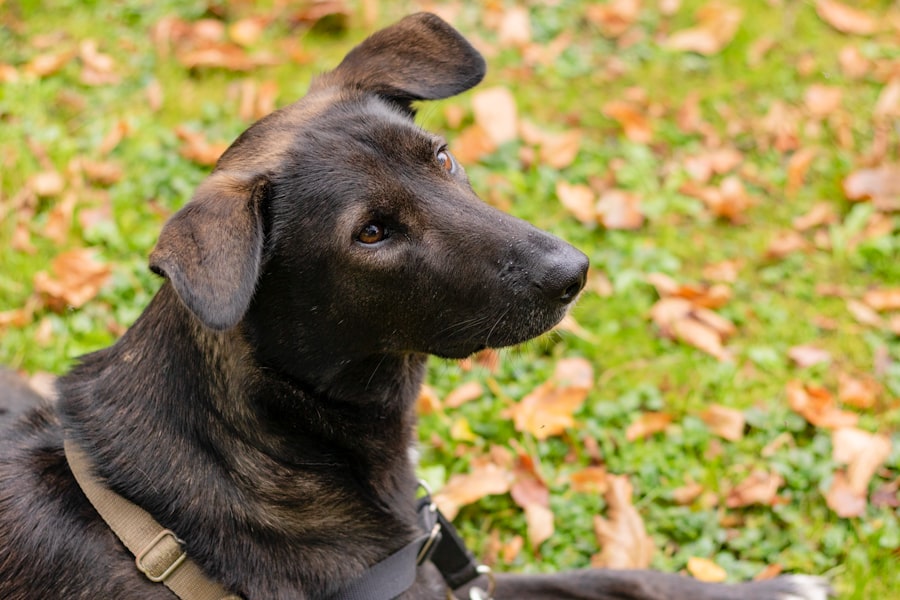Rescue animals often come from backgrounds filled with neglect, abuse, or abandonment, which can leave deep psychological scars. These experiences can manifest in various ways, including fear, anxiety, and aggression. For instance, a dog that has been physically abused may flinch at sudden movements or loud noises, while a cat that has been abandoned might hide for days upon arriving in a new environment.
Understanding the trauma these animals have endured is crucial for anyone looking to adopt or foster them. It requires a compassionate approach that acknowledges their past while providing a pathway to healing. The trauma experienced by rescue animals can also lead to behavioral issues that complicate their integration into a new home.
Many of these animals have not had the opportunity to learn basic social skills or proper behavior around humans and other pets. For example, a dog that has been isolated may not understand how to interact with people or other dogs, leading to misunderstandings and potential conflicts. Recognizing these challenges is the first step in creating an environment where rescue animals can thrive.
It is essential to approach them with patience and empathy, allowing them the time they need to adjust to their new surroundings.
Key Takeaways
- Rescue animals may have experienced trauma and require patience and understanding
- Creating a safe and comfortable environment is crucial for the well-being of rescue animals
- Building trust and bonding with rescue animals takes time and consistency
- Providing proper nutrition and healthcare is essential for the physical health of rescue animals
- Addressing behavioral and emotional issues with positive reinforcement training can help rescue animals thrive
Creating a Safe and Comfortable Environment
Establishing a safe and comfortable environment is paramount for rescue animals as they transition into their new homes. This involves not only providing physical safety but also emotional security. A designated space where the animal can retreat when feeling overwhelmed is essential.
For instance, setting up a cozy corner with a bed, blankets, and toys can help create a sanctuary where the animal feels secure. This space should be quiet and away from the hustle and bustle of daily life, allowing the animal to acclimate at its own pace. In addition to physical comfort, the environment should be free from potential hazards that could cause injury or stress.
This includes securing loose wires, removing toxic plants, and ensuring that windows and doors are properly secured. Furthermore, it is beneficial to establish a routine that provides structure and predictability. Animals thrive on routine, and knowing when to expect meals, walks, and playtime can significantly reduce anxiety levels.
By creating a nurturing environment that prioritizes safety and comfort, caregivers can help rescue animals feel more at ease in their new surroundings.
Building Trust and Bonding with Rescue Animals

Building trust with rescue animals is a gradual process that requires patience and consistency. Many of these animals have experienced betrayal or harm at the hands of humans, making them wary of new relationships. Establishing trust begins with understanding their body language and respecting their boundaries.
For example, allowing a dog to approach on its own terms rather than forcing interaction can foster a sense of safety. Simple gestures like sitting quietly nearby or offering treats can encourage the animal to come closer when it feels ready. Bonding with rescue animals also involves engaging in activities that promote positive interactions.
Spending time together through gentle play or leisurely walks can help strengthen the relationship. For instance, using toys that encourage interaction, such as tug ropes or fetch balls, can create enjoyable experiences that build trust over time. Additionally, speaking softly and using a calm demeanor can reassure the animal that it is in a safe space.
The key is to be attuned to the animal’s needs and responses, allowing the bond to develop naturally without pressure.
Providing Proper Nutrition and Healthcare
| Metrics | Data |
|---|---|
| Number of individuals receiving proper nutrition | 10,000 |
| Percentage of children vaccinated | 95% |
| Number of healthcare facilities in the area | 20 |
| Percentage of pregnant women receiving prenatal care | 85% |
Proper nutrition and healthcare are fundamental components of caring for rescue animals. Many of these animals arrive in their new homes with nutritional deficiencies or health issues stemming from neglect or poor living conditions. It is essential to consult with a veterinarian to assess their health status and develop an appropriate diet plan tailored to their specific needs.
For example, a malnourished dog may require a high-quality diet rich in protein and essential nutrients to regain strength and vitality. Regular veterinary check-ups are crucial for monitoring the health of rescue animals. These visits can help identify any underlying medical conditions that may not be immediately apparent.
Vaccinations, parasite control, and dental care are all important aspects of maintaining an animal’s health. Additionally, providing fresh water at all times and ensuring access to nutritious food can significantly improve their overall well-being. By prioritizing proper nutrition and healthcare, caregivers can lay the foundation for a healthy and happy life for their rescue animals.
Addressing Behavioral and Emotional Issues
Addressing behavioral and emotional issues in rescue animals requires a multifaceted approach that combines understanding, patience, and appropriate interventions. Many rescue animals exhibit behaviors such as excessive barking, destructive chewing, or fear-based aggression due to their traumatic pasts. Identifying the root causes of these behaviors is essential for developing effective strategies for modification.
For instance, a dog that barks excessively may be expressing anxiety or fear rather than simply being unruly. Behavioral modification techniques often involve gradual desensitization to triggers that cause stress or fear. For example, if a dog is afraid of loud noises, caregivers can help by gradually exposing the animal to those sounds at a low volume while providing positive reinforcement for calm behavior.
Additionally, creating a structured environment with clear boundaries can help alleviate anxiety by providing predictability. It is also beneficial to seek guidance from professional trainers or behaviorists who specialize in working with rescue animals, as they can offer tailored strategies for addressing specific issues.
Incorporating Positive Reinforcement Training

Positive reinforcement training is an effective method for teaching rescue animals new behaviors while building trust and confidence. This approach focuses on rewarding desired behaviors rather than punishing unwanted ones, creating a positive learning environment. For example, when teaching a dog to sit, offering treats or praise immediately after the desired action reinforces the behavior and encourages repetition.
This method not only helps in training but also strengthens the bond between the animal and its caregiver. Incorporating positive reinforcement training into daily routines can also provide mental stimulation for rescue animals. Engaging them in training sessions helps keep their minds active while reinforcing good behavior patterns.
Simple commands like “stay,” “come,” or “leave it” can be taught using this method, making it easier for caregivers to manage their pets in various situations. Moreover, positive reinforcement fosters a sense of accomplishment in the animal, boosting its confidence and overall well-being.
Fostering Socialization and Playtime
Socialization is a critical aspect of helping rescue animals adjust to their new lives. Many of these animals may have had limited exposure to different environments, people, or other animals before being rescued. Gradually introducing them to new experiences can help reduce fear and anxiety while promoting adaptability.
For instance, taking a dog on short outings to parks or pet-friendly stores allows it to encounter various sights, sounds, and smells in a controlled manner. Playtime is equally important for socialization and emotional well-being. Engaging in interactive play with toys or other pets can help rescue animals develop social skills while providing an outlet for energy and stress relief.
Activities such as fetch or tug-of-war not only promote physical exercise but also strengthen the bond between the animal and its caregiver. Additionally, arranging playdates with other friendly pets can facilitate positive interactions and help build confidence in social settings.
Supporting the Transition to a Forever Home
The transition from a rescue environment to a forever home can be both exciting and challenging for animals. It is essential for caregivers to recognize that this process may take time as the animal adjusts to its new surroundings and routines. Providing consistent support during this period is crucial for helping the animal feel secure and comfortable in its new life.
Establishing routines around feeding, exercise, and playtime can create a sense of stability that eases anxiety. Moreover, caregivers should remain patient as the animal navigates its new environment. Some rescue animals may exhibit behaviors such as hiding or reluctance to explore initially; this is normal as they acclimate to their surroundings.
Encouraging exploration through gentle encouragement and positive reinforcement can help facilitate this process. Additionally, maintaining open communication with adoption agencies or shelters can provide valuable resources and support during this transition period. By fostering an understanding environment that prioritizes patience and compassion, caregivers can help rescue animals thrive in their forever homes.
FAQs
What is a rescue animal?
A rescue animal is an animal that has been saved from a shelter, abusive situation, or abandonment and is in need of a new home.
How can I provide proper pet care for a rescue animal?
Proper pet care for a rescue animal includes providing a balanced diet, regular exercise, veterinary care, and a safe and loving environment.
What are some common behavioral issues in rescue animals?
Common behavioral issues in rescue animals may include fear, anxiety, aggression, and separation anxiety. These issues can often be addressed with patience, training, and socialization.
How can I help a rescue animal adjust to its new home?
To help a rescue animal adjust to its new home, it’s important to provide a consistent routine, plenty of positive reinforcement, and a comfortable and secure environment. Gradual introductions to new people, animals, and experiences can also help with the adjustment process.
Are there any special considerations for pet care for rescue animals?
Rescue animals may have specific medical or emotional needs that require extra attention. It’s important to work with a veterinarian and, if necessary, a professional trainer to address any special considerations for pet care.
